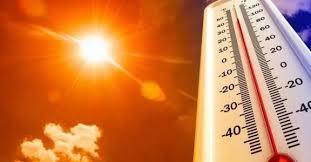According to the India Meteorological Department (IMD), India will soon introduce its own composite index the following year to measure the effects of heat on its population and produce impact-based heat wave alerts for particular areas. Last week, the IMD had started issuing an experimental heat index for various regions of the nation that accounts for air temperature and relative humidity to gauge how hot it actually feels.
Mrutyunjay Mohapatra, Director General of Meteorology has said, “The heat index is an experimental product. It is not validated and we have mentioned that (on the IMD’s website) too. We are coming up with our own system now, a multi-parameter product called ‘heat hazard score’. We hope that it will be better than the others.”
He further stated that index will incorporate additional variables like wind and exposure time in addition to temperature and humidity. He said it will also serve as a reliable indicator of heat stress in people. The hazard score will be completed and “operational in the next summer season,” according to the IMD DG.
When asked whether the health data has also been incorporated into the product, DG Mohapatra said that it will be gradually done by the bureau. “We have been working on it but health data is not readily available in some places,” he stated.
Last year, DG Mohapatra and his group had conducted a heat wave hazard analysis for the entire nation, accounting for maximum temperature, minimum temperature, humidity, wind, and heat wave duration. The analysis will contribute in generating heat hazard scores, which will serve as thresholds for the issuance of impact-based heat wave alerts for particular locations.
The main distinction between India’s heat hazard score and the US heat index is that India also takes into account factors that aggravate heat conditions, such as the minimum temperature, wind, and exposure time.
For the month of May, the eastern and central-eastern regions of the nation should expect higher-than-normal maximum temperatures and more days with high temperatures, according to IMD predictions. IMD data shows that the number of heat waves increased by 24% between 2010 and 2019 compared to 2000 to 2009. After 2015 though, a decreasing trend has been registered. While the mortality rate from heat waves increased by 62% between 2000 and 2019, the mortality rate from tropical cyclones decreased by 94% during that time.
Human health is severely impacted by heat waves, which can result in cramps, exhaustion, stress, heat stroke, and even death (in extreme heat wave cases). Particularly impacted are the elderly, children, people with psychiatric disorders, kidney diseases, heart and respiratory issues, and children. Extremely hot spells can significantly reduce crop yields and impair many crops’ ability to reproduce. In fact, this year, India witnessed hottest February since record-keeping began in 1901. Despite this, heat wave crisis is yet to be recognised as natural disaster at the national level.


























 WhatsApp us
WhatsApp us